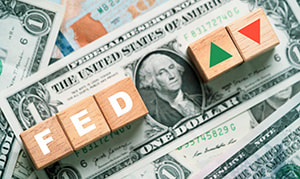 Buying a home can feel like a dream that’s out of reach, especially when you think about saving up for a big down payment. But the good news is, there are plenty of ways to buy a home without having a huge pile of cash. Here are 15 options to help you make homeownership a reality, explained in simple terms:
0 Comments
 When a home is priced above its market value, it risks missing a large audience of serious buyers. Most buyers set a price range when they begin their house hunting, and if your home is priced too high, it won't even appear in their search results. Instead of making your home stand out, overpricing can prevent it from being seen at all, limiting your pool of potential buyers from the start. A competitive price helps you stand out and ensures more eyes on your listing. 1. Fewer Showings, Less Excitement One drawback of overpricing is its impact on showings, which are one of the most powerful ways to build buyer interest. Overpricing, however, can lead to fewer showings and missed opportunities, as potential buyers may feel they're not getting the value they want within their budget and skip over your property. Remember, more showings often mean more offers, giving you the competitive edge to negotiate the best deal. 2. The Old Listing Dilemma Another pitfall of overpricing is the risk of your home lingering on the market too long and developing a "stale" reputation, leaving buyers to wonder if something might be wrong. If your home is overpriced and doesn't sell quickly, it may sit unsold for months. Once that happens, price adjustments alone may not be enough to overcome buyers' doubts. Pricing it right from the beginning keeps your listing fresh and appealing. 3. Price Cuts Signal Desperation Overpricing can also lead to frequent price cuts, which can create doubt in buyers' minds. Multiple price adjustments can make a property appear less desirable or even give the impression that you're eager to sell at any cost. Instead of attracting a fair offer, you might get lower-than-expected bids. Setting a realistic price from day one helps you avoid these reductions and maintain the value of your listing. 4. Unexpected Appraisal Setbacks Even if a buyer agrees to a high price, there's a final hurdle—the appraisal. If the appraiser values your home below the selling price, the buyer's financing could fall through, forcing you to either lower the price or lose the sale. By setting an accurate price, you reduce the likelihood of these last-minute appraisal issues and keep your sale on track. As your trusted real estate professional, I'm here to help you price your home strategically from day one. Together, we'll attract the right buyers, build momentum, and ensure a smooth, successful sale. Let's make your home sale a success—reach out today to discuss the best pricing strategy!  The Federal Reserve's recent decision to cut its key interest rate by half a percentage point—the first cut in four years—has significant implications for both buyers and sellers. While the Fed doesn't set mortgage rates directly, its actions influence them. By lowering the federal funds rate—the rate at which banks lend to each other—the Fed indirectly pushes down other interest rates, including mortgages. However, mortgage rates are also shaped by broader economic factors beyond the Fed's control. Here's what to expect: Don't Wait for the "Perfect" Rate If you're considering buying a home, holding out for lower rates might seem wise, but experts recommend acting now. The 30-year fixed mortgage rate is hovering around 6.5%, down from over 7.6% last year. According to Jessica Lautz, deputy chief economist for the National Association of Realtors (NAR), anticipated rate cuts are likely already factored into current mortgage rates. Buyers should take advantage of today's rates, as refinancing remains an option if rates drop further. Why Lower Rates Work in Buyers' Favor Even a 1% rate reduction can save buyers tens of thousands of dollars over the life of a mortgage. Lower rates offer three key benefits: reduced interest costs, smaller monthly payments, and easier loan approvals. Reduced payments lower the lender's risk, increasing the chances of approval. Modest rate drops alone can lead to long-term savings, making homeownership more affordable for many. More Buyers, More Demand For sellers, falling rates often bring increased buyer activity. Lower borrowing costs boost purchasing power, drawing more buyers into the market—especially in areas with tight inventory. This increased demand can drive up home prices, making it an ideal time for sellers to list their homes. Acting now allows sellers to capitalize on motivated buyers eager to lock in lower rates before competition intensifies. Stay Flexible: Negotiations and Agent Compensation The fall market typically slows, and with buyers holding out for lower mortgage rates, sellers might feel pressure to reduce prices. To avoid this, it's essential to price your home correctly from the beginning to protect your overall return. Additionally, recent changes from the NAR have made negotiations more complex, particularly around buyer's agent compensation. Now that sellers no longer set the buyer's agent fee, offers may include unique terms regarding agent payment. Sellers should be prepared for these new dynamics and stay open to flexible discussions. Adapting in both pricing and compensation can be the key to closing deals and securing the best offers. |
AuthorA variety of pertinent real estate topics and tips from various authors and contributors. Archives
December 2024
Categorieshow much home can i afford?*
|


